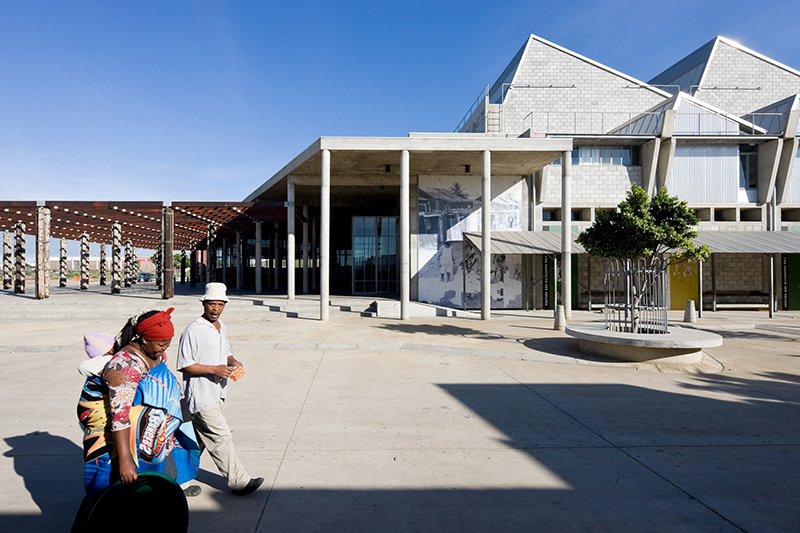The Ethical Architect in Modern Society
What is the role of the architect in divided societies? Should architects be concerned if workers die in the process of building their designs? How far should the ethical architect go without taking on the problems of the world?
These are the questions that have informed the work of South African architect Jo Noero well before his country sought independence, and remains the basis of his practice.“In South Africa, it’s very difficult to make work as an architect because I live in a society that is very unequal,” he said, during a lecture for LAU architecture students held October 26. “You have a great number of people who are very poor and a small number of people who are very rich, and when I do my work as an architect I want to work for everyone.”
On a map, South Africa encompasses two worlds; one marked by the corrugated iron of its slums, the other ruled by wealth and modernism. Noero’s design philosophy encourages these two disparate worlds to collide. This is best exemplified by a cultural complex he designed in Red Location, Port Elizabeth, a shanty settlement that underscored the legacy of the fight against apartheid.
“The idea behind this was to transform our cities, to change them in significant ways so that you would invest in the poor the dignity they never had before,” he said. “The rich would come to places where the poor lived.”
Noero, a professor of architecture at the University of Cape Town since 2000 and practicing architect, has found novel ways to navigate the inherent inequalities in South African society. When a client interviews him for a potential projects, he in turn interviews them about their commitment to ethical practices. “Eight out of ten tell us to get stuffed,” he quipped.
Noero’s work, which has been exhibited around the world and has won him numerous international awards, is preoccupied with the relationship between geometry and use. “Those buildings that survive, and show the greatest capacity to adjust are marked by the most extreme precision of geometry,” he said, echoing Italian architect Aldo Rossi from whom his work draws inspiration.
But rapid technological advances, reflected in the shift from hand drawing to digital illustration, he said, comes at the expense of durability. “The plans have lost their meaning, but more importantly it introduced weak geometry, which I believe leads us nowhere,” he explained. “The buildings we made today will not be able to survive into the future.”
His later work dabbles with precise platonic geometry to create ambiguous social spaces; this is best illustrated by the circular hubs in St. Cyprian’s School in Cape Town that, designed without a pre-determined purpose, are used as creative spaces by the school children.
His firm Noero Architects was established in 1984 in Johannesburg and moved to Cape Town in 2000. It has completed over 150 buildings, with public buildings such as museums, schools, galleries and social housing taking focus.
With the proceeds from a lucrative design projects, Noero subsidizes smaller-scale ventures for church groups and impoverished communities. Making space in this practice to accommodate everyone is not just important for an architect’s moral sensibility, he argued, it’s important for their sanity.
“The world can’t just be a shopping mall with fancy clothes and expensive shoes, it’s got to be about everything that goes on in a city,” he said. One of the core issues in late post-modernism, according to Noero, is that the ethical sense of responsibility in the work architects do has been neglected. Perhaps Noero’s in an example for other ethically-inclined architects to follow.

